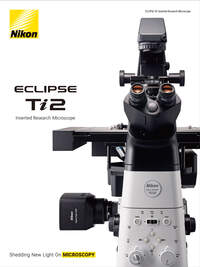- fr Change Region
- Global Site
- Accueil
- Produits
- Microscopes inversés
- ECLIPSE Ti2 Series
Articles applications
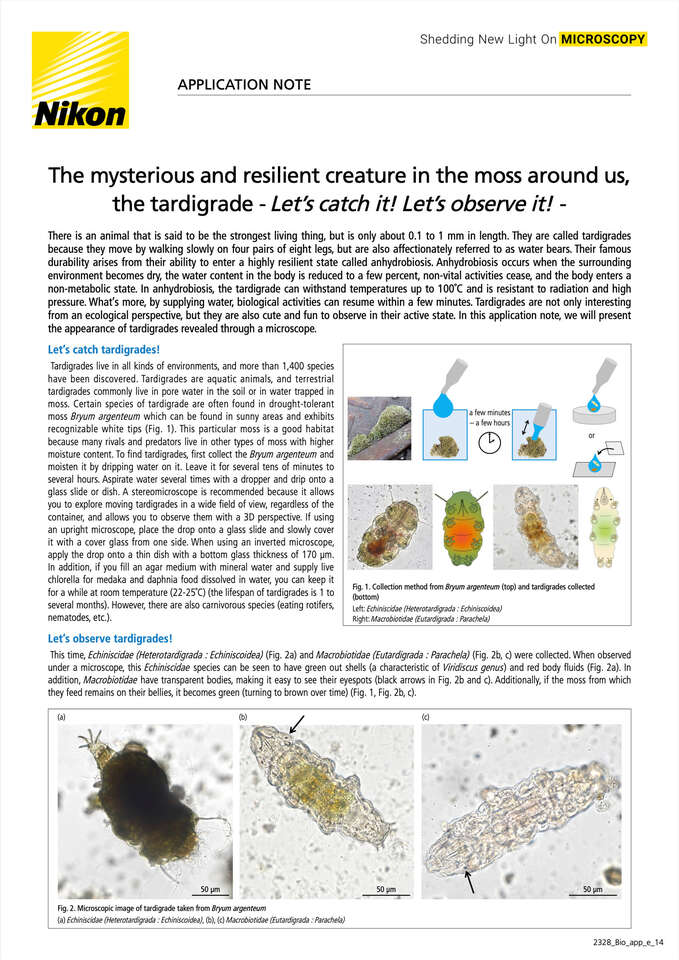
The mysterious and resilient creature in the moss around us, the tardigrade - Let's catch it! Let's observe it! -
juin 2024
There is an animal that is said to be the strongest living thing, but is only about 0.1 to 1 mm in length. They are called tardigrades because they move by walking slowly on four pairs of eight legs, but are also affectionately referred to as water bears. Their famous durability arises from their ability to enter a highly resilient state called anhydrobiosis. Anhydrobiosis occurs when the surrounding environment becomes dry, the water content in the body is reduced to a few percent, non-vital activities cease, and the body enters a non-metabolic state. In anhydrobiosis, the tardigrade can withstand temperatures up to 100℃ and is resistant to radiation and high pressure. What's more, by supplying water, biological activities can resume within a few minutes. Tardigrades are not only interesting from an ecological perspective, but they are also cute and fun to observe in their active state. In this application note, we will present the appearance of tardigrades revealed through a microscope.
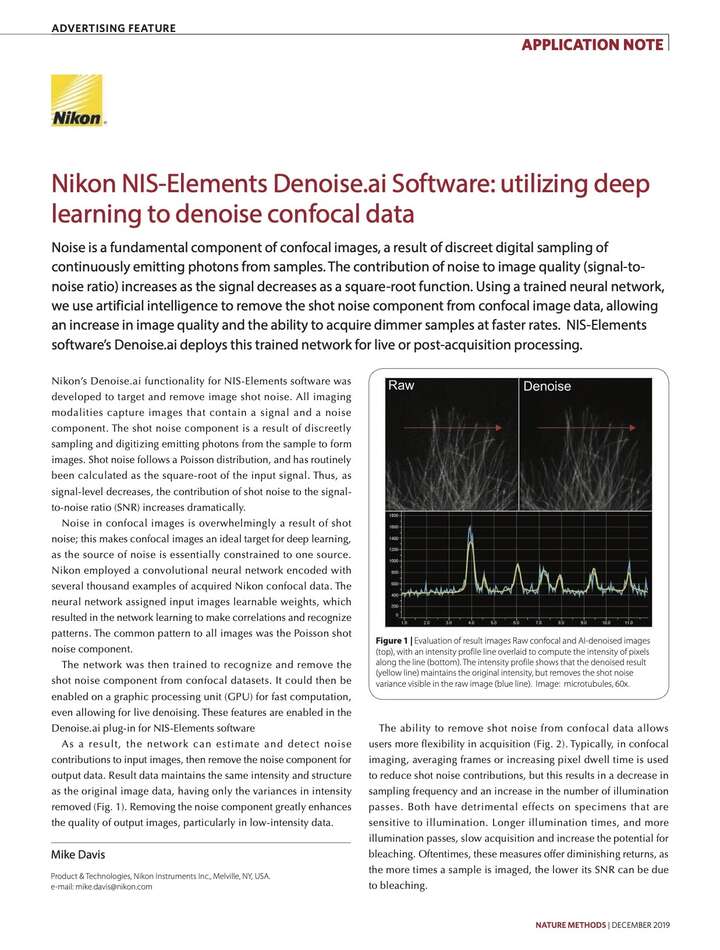
Nikon NIS-Elements Denoise.ai Software: utilizing deep learning to denoise confocal data
janvier 2020
Noise is a fundamental component of confocal images, a result of discreet digital sampling of continuously emitting photons from samples. The contribution of noise to image quality (signal-to-noise ratio) increases as the signal decreases as a square-root function. Using a trained neural network, we use artificial intelligence to remove the shot noise component from confocal image data, allowing an increase in image quality and the ability to acquire dimmer samples at faster rates. NIS-Elements software’s Denoise.ai deploys this trained network for live or post-acquisition processing.
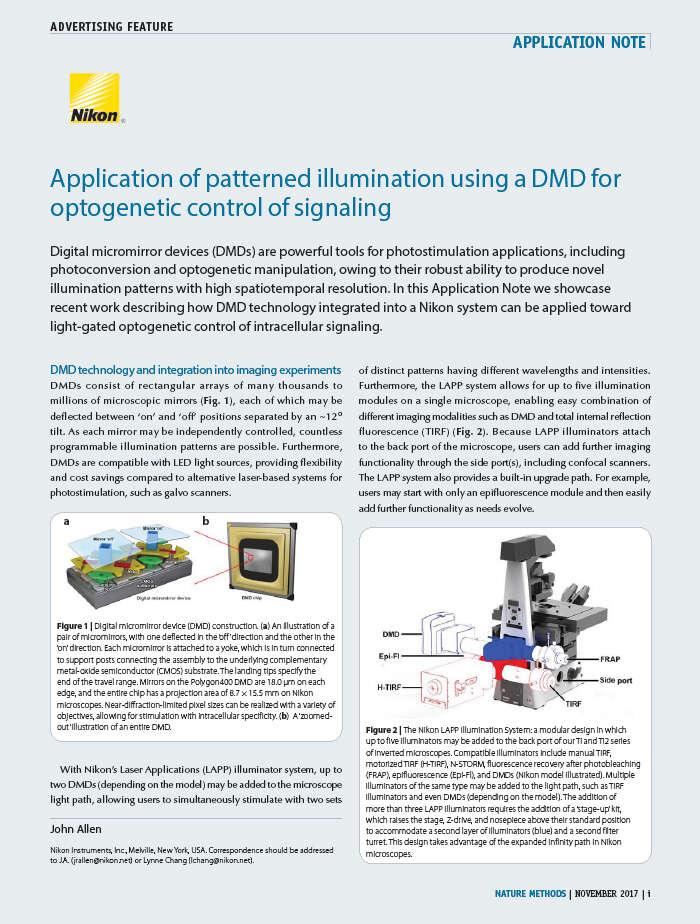
Application of Patterned Illumination Using a DMD for Optogenetic Control of Signaling
novembre 2017
Digital micromirror devices (DMDs) are powerful tools for photostimulation applications, including photoconversion and optogenetic manipulation, owing to their robust ability to produce novel illumination patterns with high spatiotemporal resolution. In this Application Note we showcase recent work describing how DMD technology integrated into a Nikon system can be applied toward light-gated optogenetic control of intracellular signaling.
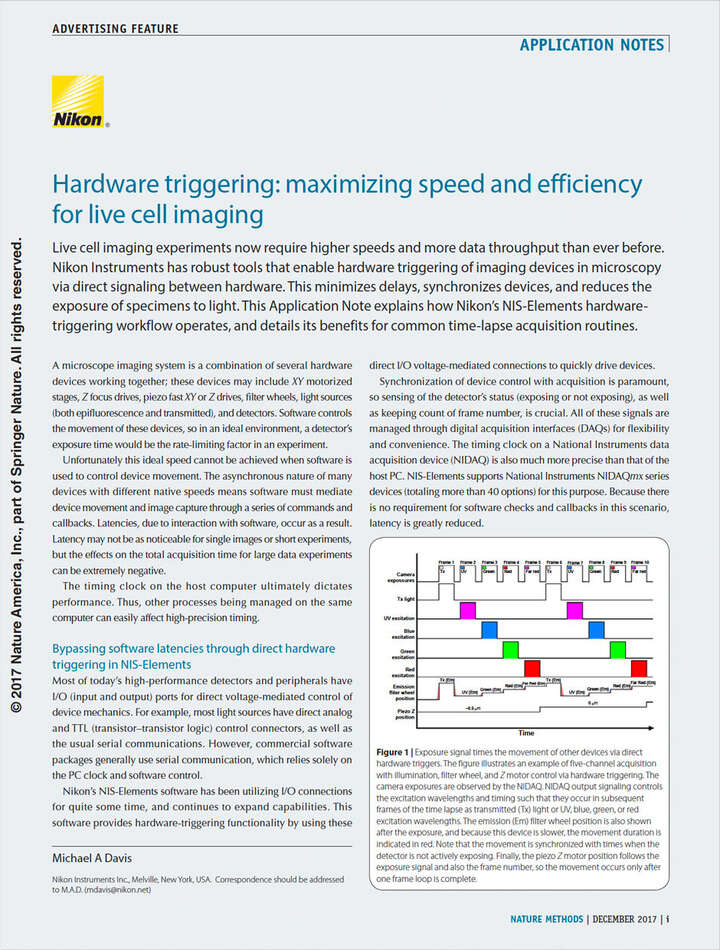
Hardware Triggering: Maximizing Speed and Efficiency for Live Cell Imaging
décembre 2017
Live cell imaging experiments now require higher speeds and more data throughput than ever before. Nikon Instruments has robust tools that enable hardware triggering of imaging devices in microscopy via direct signaling between hardware. This minimizes delays, synchronizes devices, and reduces the exposure of specimens to light. This Application Note explains how Nikon’s NIS-Elements hardwaretriggering workflow operates, and details its benefits for common time-lapse acquisition routines.
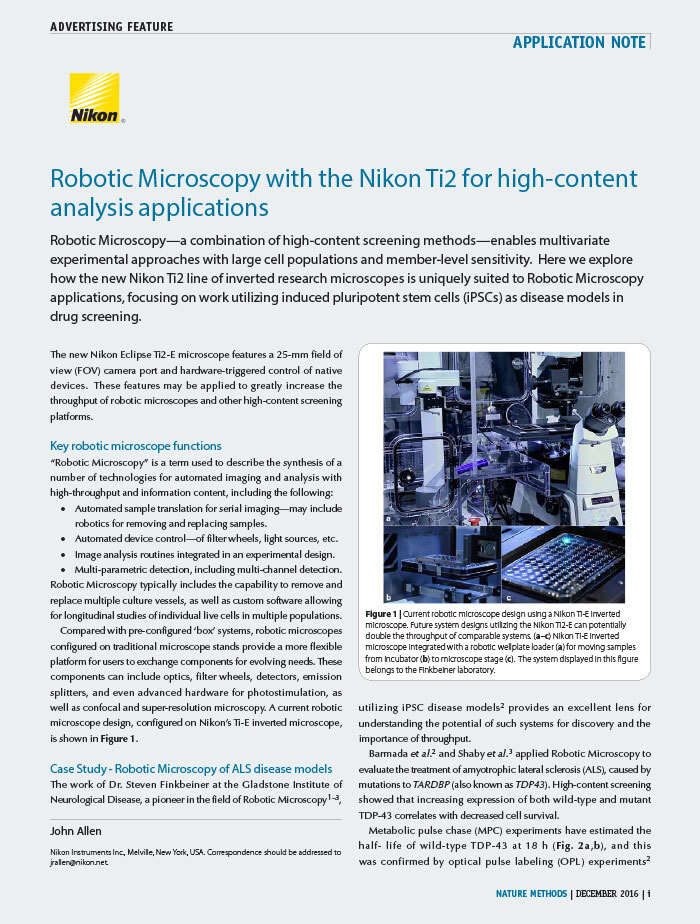
Robotic Microscopy with the Nikon Ti2 for High-Content Analysis Applications
décembre 2016
Robotic Microscopy—a combination of high-content screening methods—enables multivariate experimental approaches with large cell populations and member-level sensitivity. Here we explore how the new Nikon Ti2 line of inverted research microscopes is uniquely suited to Robotic Microscopy applications, focusing on work utilizing induced pluripotent stem cells (iPSCs) as disease models in drug screening.


